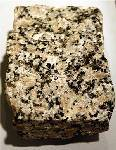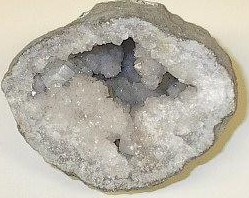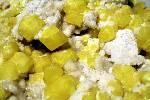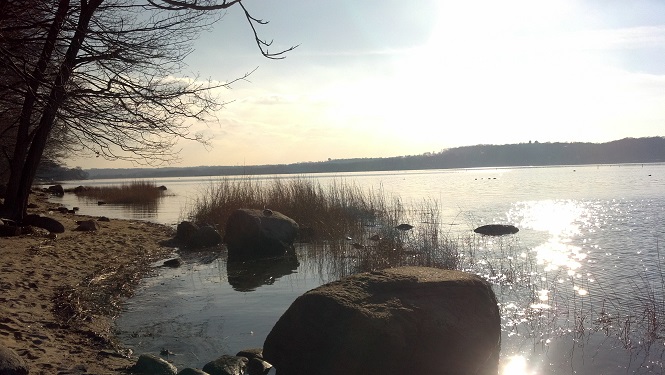The Story of Mineral Crystallization

FUSION is a complex process by which minerals form from magma.
Magma is liquid rock that contains a great variety of elements in motion in the form of ions.
As magma rises upward, both pressure and temperature decrease.
As the magma cools the movement of ions past each other slows down until the attraction between compatible elements is strong enough for the ions
to join and form particles of similar composition. Further cooling allows these particles to grow into the interlocking crystalline minerals that
make up whatever rock is eventually formed. The cooling history of magma is recorded in the texture of the rock. The slower the drop in temperature
(or pressure), the larger the crystal will be. The faster the change, the smaller the crystal will be. In fact, if the drop in temperature is quick
enough, no crystallization will take place and the solid produced would be a glass (obsidian). If pressure is reduced rapidly enough, escaping gases
can create vesicles (bubbles) in the rock or turn it into froth (pumice or scoria). Porphyry is a type of igneous rock that contains large mineral grains
(phenocrysts) surrounded by finer grained minerals. This reveals that this magma has experienced two phases of cooling rates. Note: ice is fused water.
Ice is a mineral... check the definition.
 Again, the size and texture of the crystals formed
depends on the rate of change in temperature and pressure which essentially determines how much time is available for the crystals to develop.
Of course the supply of material available from the solution would also be a factor. Crystal lined geodes and veins,
evaporites like halite and gypsum, and cave deposits of travertine are examples of some of the minerals that may form from solution.
Again, the size and texture of the crystals formed
depends on the rate of change in temperature and pressure which essentially determines how much time is available for the crystals to develop.
Of course the supply of material available from the solution would also be a factor. Crystal lined geodes and veins,
evaporites like halite and gypsum, and cave deposits of travertine are examples of some of the minerals that may form from solution.
 Mineralogically, it is the later route that has an important function in crystal development. When super heated, mineral-rich gases escape from deep subsurface chambers, they are released at the surface through fumaroles, vents and volcanoes. Here, very rapid drops in temperature and pressure cause minerals to form around hydrothermal and volcanic openings. Sulfur and cristobalite are examples of minerals that may form by sublimation. Snow flakes and frost on the window would be another.
Mineralogically, it is the later route that has an important function in crystal development. When super heated, mineral-rich gases escape from deep subsurface chambers, they are released at the surface through fumaroles, vents and volcanoes. Here, very rapid drops in temperature and pressure cause minerals to form around hydrothermal and volcanic openings. Sulfur and cristobalite are examples of minerals that may form by sublimation. Snow flakes and frost on the window would be another.
written by George Allgaier
photography by Lisa Nordstrom. Conservator

